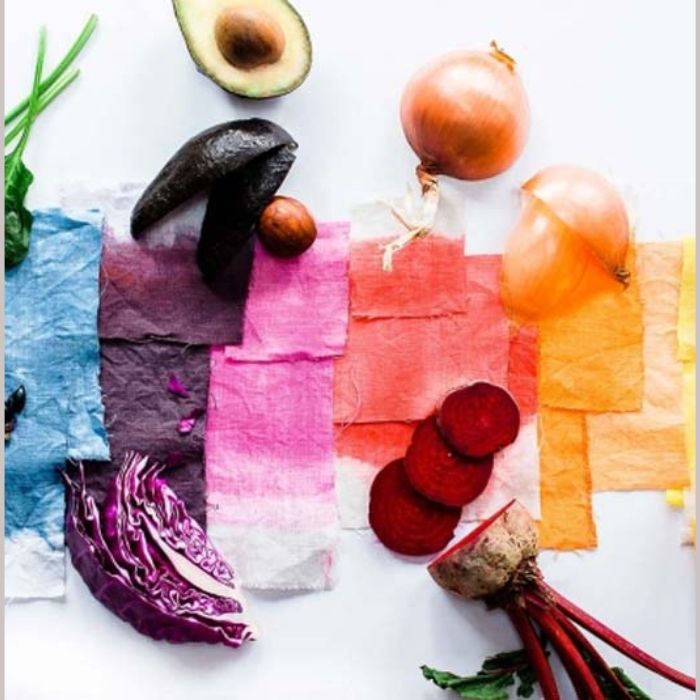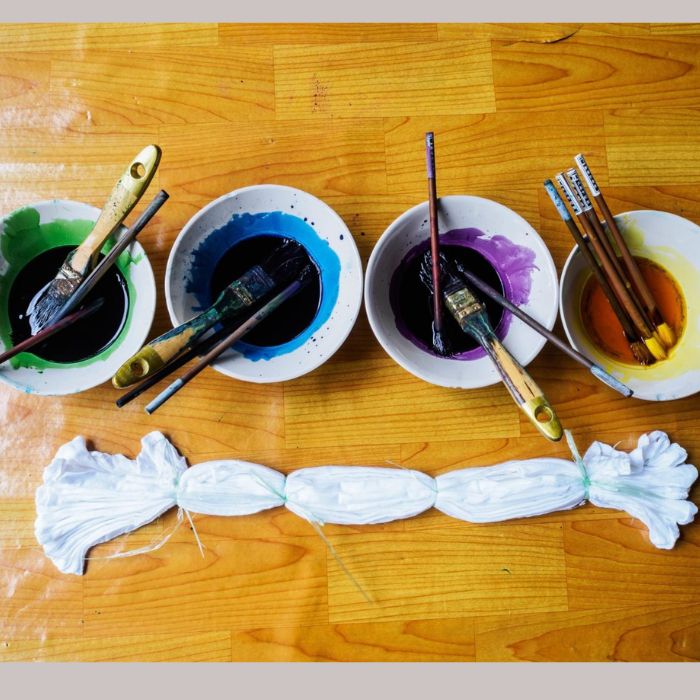As someone who loves experimenting with colors, I have found dyeing clothes enjoyable and creative way of revamping my wardrobe. Not only is it fun, but it also saves me money by avoiding buying new clothes. Here are some tips on how to color clothes at home.
1. Gather your materials to how to color clothes at home
Before dyeing clothes, ensure all necessary materials are available to how to color clothes at home: Fabric dye, Salt or vinegar (depending on fabric type), A large pot for boiling water, A stirring spoon, Rubber gloves, A plastic container or sink for rinsing clothes, Detergent for washing clothes after dyeing
How to color clothes at home: Choosing the right dye
When selecting a dye, consider the fabric type and color desired. Some dyes work better on certain fabrics, and some colors may require multiple dyeing sessions. Always follow the dye manufacturer’s instructions for the best results.
How to color clothes at home: Preparing the fabric
Before dyeing, wash the fabric to remove any dirt or residue. Do not use fabric softener, which can prevent the dye from adhering correctly.
If the fabric is new, wash it separately to avoid dyeing other clothes. Always wear rubber gloves when handling dye to avoid staining your skin.
How to color clothes at home: Boiling the water
In this how to color clothes at home step, fill a large pot with enough water to cover the fabric. Add salt or vinegar, depending on the fabric type and dye instructions. Bring the water to a boil and stir in the dye until it dissolves.
How to color clothes at home: Dyeing the fabric
Wet the fabric and add it to the dye bath. Stir constantly for even color distribution. Follow the dye manufacturer’s instructions for recommended dyeing time.
- For a lighter color, use less dye and dye for a shorter time.
- For a darker color, use more dye and dye for a longer time.
Rinsing and washing
In this how to color clothes at home step, After dyeing, rinse the fabric in cold water until the water runs clear. Wash the fabric separately with detergent to remove any excess dye. Dry the fabric according to the manufacturer’s instructions.
Wait to wash the dyed fabric with other clothes until after the first wash, as the excess dye may transfer.
See more about:
How to match color clothes: Best ways you should know
How to choose your color palette for clothing
2. Choose the right dye to how to color clothes at home
When dyeing clothes, the first step is choosing the suitable dye. There are two types of dyes: natural and synthetic. Natural dyes are made from plant-based sources such as berries, roots, and leaves. Synthetic dyes, on the other hand, are chemically produced.
Consider the fabric type is the first step of how to color clothes at home
It’s essential to consider the type of fabric you will be dyeing when choosing a dye. Different fabrics absorb dye differently, so it’s crucial to choose a dye that is compatible with the material. For example, cotton and linen fabrics work well with most dyes, while silk and wool require special dyes.
How to color clothes at home: Choose the right color
Another critical factor to consider is the color you want to achieve how to color clothes at home. Some dyes come in a limited range of colors, while others offer a wider variety. It’s also important to note that the fabric you are dyeing will affect the final color. For example, dyeing a yellow shirt with blue dye will result in a green color. It’s also important to find trustworthy clothing manufacturers when buying clothes, like Vina Z garment factory, who can advise you on the most attractive colour schemes and combinations.
Always read the instructions on the dye package carefully before starting the dyeing process. This will ensure you choose the suitable dye and achieve the desired results when how to color clothes at home.
Consider the environmental impact
When choosing a dye, it’s essential to consider the environmental impact. Synthetic dyes can harm the environment, while natural dyes are more eco-friendly. Some natural dyes, such as indigo, can even have a positive impact on the environment by improving soil quality.
Remember that natural dyes may not be as colorfast as synthetic dyes, meaning they may fade faster over time.
Test the dye to how to color clothes at home
Before dyeing your entire garment, it’s a good idea to test the dye on a small, inconspicuous area first. This will help you determine if the dye is compatible with the fabric and if you like the color to how to color clothes at home. It’s also a good idea to test the dye on a swatch of fabric the same type as your garment.
- Wash the fabric swatch to remove any sizing or finishes
- Prepare the dye according to the package instructions
- Apply the dye to the fabric swatch and let it sit for the recommended amount of time
- Rinse the fabric swatch with cool water and let it dry
- Check the color and make any necessary adjustments before dyeing your entire garment
Remember that dyeing clothes can be a fun and creative way to give new life to old garments, but it’s essential to choose the suitable dye and follow the instructions how to color clothes at home carefully to achieve the best results.
3. Preparing the fabric to how to color clothes at home
Preparing the fabric correctly is essential before dyeing. This involves thoroughly washing the fabric to eliminate any dirt, oils, or residues that could hinder the dye’s absorption. Prioritize treating any stains on the fabric before dyeing.
Wetting the fabric
After washing, wet the fabric thoroughly. This helps the dye to spread evenly throughout the fabric. If the fabric is too dry, it may result in uneven dyeing.
Choosing the dye to how to color clothes at home
When choosing a dye, consider the type of fabric you are dyeing and the color you want to achieve. Some dyes work better on certain fabrics, and some colors may require multiple dye baths to achieve the desired shade.
Tip to how to color clothes at home: Always follow the instructions on the dye package for best results.
Protecting your work area
Dyeing can be messy, so it’s essential to protect your work area. Cover your work surface with plastic or newspaper, and wear gloves and an apron to protect your skin and clothing.
4. Mix the dye to how to color clothes at home
Follow the instructions on the dye package to mix the dye. Most dyes require boiling water and salt or vinegar to help set the color. Stir the mixture thoroughly until the dye is completely dissolved.
How to color clothes at home: Boiling water and salt or vinegar
Boiling water and salt or vinegar are essential to help set the color of the dye. Follow the instructions on the dye package to determine the salt or vinegar needed. Stir the mixture thoroughly to ensure the dye is evenly distributed.
Thoroughly stir the mixture to how to color clothes at home
In this how to color clothes at home step, it is important to stir the mixture until the dye is completely dissolved thoroughly. This will ensure that the color is evenly distributed and will result in a more vibrant and consistent color. Use a spoon or whisk to stir the mixture.
Adding too much salt or vinegar can affect the color of the dye. Be sure to follow the instructions on the dye package carefully.
How to color clothes at home: Use boiling water
Most dyes require boiling water to help set the color. Boiling water will also help to dissolve the dye more quickly and evenly. Use a pot or kettle to boil the water before adding the dye.
Wear gloves and protect your work surface when working with dye, as it can stain clothing and other materials.
Allow the dye to set
In this how to color clothes at home step, after mixing the dye, allow it to be set according to the instructions on the package. This will ensure that the color is fully absorbed by the fabric and will result in a longer-lasting color. Rinse the fabric thoroughly with cold water after the dye has set.
Some dyes may require additional steps, such as washing the fabric in a special detergent or adding a fixative to help set the color.
5. Dyeing fabric to how to color clothes at home
When dyeing fabric, it’s essential to wear rubber gloves to protect your hands from the dye. To begin, place the wet fabric into a pot of hot dye and stir continuously for about 30 minutes. It’s essential to ensure that the fabric is fully submerged in the dye to ensure even coloring.
After 30 minutes, remove the fabric from the pot and rinse it under cold water until it is clear. This removes any excess dye and helps to set the color to how to color clothes at home.
Choosing the right dye
When choosing a dye, it’s essential to consider the type of fabric you’re working with. Some dyes work better on certain fabrics than others. It’s also important to consider the color you want to achieve and whether you want a solid color or a tie-dye effect.
Pro tip to how to color clothes at home: Different fabrics require different types of dye, so it’s essential to read the label and choose the right one for your project.
Preparing the fabric
Before dyeing the fabric, it’s crucial to prewash it to remove any dirt or residue that may interfere with the dyeing process to how to color clothes at home. It’s also important to soak the fabric in water to ensure fully saturated before dyeing.
Pro tip: Properly preparing the fabric is vital to achieving a successful dye job.
Protecting your work area
Dyeing fabric can be messy, so it’s essential to protect your work area. Cover your work surface with plastic or old newspapers to prevent any dye from staining your furniture or floors.
Pro tip to how to color clothes at home: Taking the time to protect your work area can save you a lot of time and hassle in the long run.
6. Wash and dry the fabric to how to color clothes at home
After rinsing, wash the fabric with detergent to remove any remaining dye particles. Use a gentle cycle and avoid using bleach or fabric softeners.
- Hanging and drying: Once washed, hang the fabric to dry. Avoid direct sunlight as this can cause fading.
- Ironing the fabric: Once dry, iron the fabric to smooth out any wrinkles.
In this how to color clothes at home step, it is essential to avoid using bleach or fabric softeners as they can damage the fabric. Direct sunlight can cause fading, so it is best to hang the fabric to dry in a shaded area. Ironing the fabric while still slightly damp can make the process easier and more effective.
7. Tips and tricks in how to color clothes at home steps
When dyeing clothes at home, there are a few things to remember to achieve great results.
- Choosing the right pot: In this how to color clothes at home step, it’s essential to use a large enough pot to allow the fabric to move around freely. This ensures that the dye is evenly distributed and the color is consistent throughout the garment.
- Testing the dye: Before dyeing the entire garment, it’s a good idea to test the dye on a small piece of fabric. This allows you to see how the color will turn out and make any necessary adjustments before dyeing the entire garment. Testing the dye on a small piece of fabric can save you from ruining the entire garment.
- Adjusting the dye: The amount of dye and water you use will affect the color of the garment. For darker colors, use more dye and less water. For lighter colors, use less dye and more water. In this how to color clothes at home step, adjusting the amount of dye and water can help you achieve the desired color.
- Adding salt or vinegar: Adding salt to the dye is recommended if you’re dyeing cotton or linen fabrics. Adding vinegar is recommended if you’re dyeing silk or wool fabrics. This helps the dye adhere to the fabric and produces more vibrant color. Adding salt or vinegar can improve the color and durability of the dye.
- Creating unique designs: To create a tie-dye effect, twist and bind the fabric with rubber bands before dyeing. You can also experiment with different colors and techniques to create unique designs. Experimenting with different colors and techniques can result in one-of-a-kind garments.
By following these tips and tricks, you can achieve great results when how to color clothes at home. Remember to always read and follow the instructions on the dye package, and test a small patch of fabric before dyeing the entire garment.
8. The benefits of dyeing clothes at home
Dyeing clothes at home has several benefits, including:
- Saving money by avoiding the need to buy new clothes
- Creative expression by experimenting with colors and designs
- Reducing waste by repurposing old clothes
- Environmental friendliness by using natural dyes instead of synthetic ones
In conclusion, dyeing clothes at home can be a fun and rewarding experience. With the suitable materials and techniques, you can transform your wardrobe into something unique and personalized. So go ahead to how to color clothes at home, and try it – who knows what unique creations you might come up with!








Trả lời